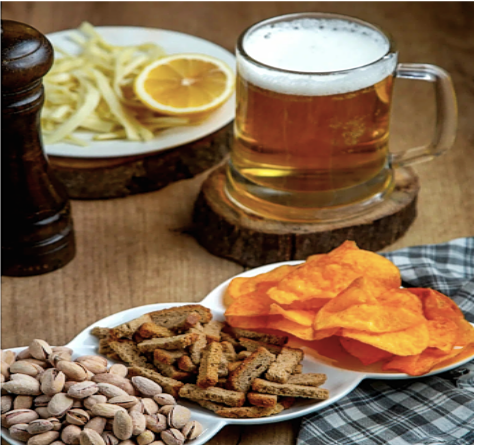Your cart is currently empty!
Medical Uses Of Dried Cranberries
There are roughly 120 different species of Viburnum that occur in the northern hemisphere. Many species are important for environmental plantings and for ornamentals. The viburnums are part of the honeysuckle family.
V. Americanum also goes by several other common names. Squaw bush and cramp bark are the most frequently used. Once you’ve smelled this sweetish-sour viburnum, you’ll forever recognize the presence of this food-medicine, especially valuable since it remains usable all year round.
The distinctive reddish-orange berries, growing at the ends of the limbs, expand from usually white flowers in the spring into flat clusters, shriveling but clinging throughout the nearly barren woodlands throughout the wintertime. Like any other established gourmet treat, getting to like the berries is an acquired taste. But just let a few of the frozen, juicy fruits melt in your parched mouth like flavored ice as I did one year in Montanas Glacier National Park, and you’ll become a convert for life as I did.
The fruit is a one-seeded drupe with a soft pulp and a thin stone. During the ripening process, berries of most species change. in color from green to various shades of red, with orange-red being the most common.
The generally maple-shaped leaves, becoming beautifully spectacular like those of that tree in the autumn, have coarsely irregular teeth and about three to five major veins culminating near the base.

To bring down swelling in glands from measles, mumps or chickenpox
Dried cranberries are not typically administered as an actual therapy. Members of the Algonquian native American tribes have been using cranberries to decrease swelling for centuries. We all know that Cranberries are good for you! Diseases like measles, mumps, or chicken pox can be treated by a diet containing cranberries.
For these reasons cranberries may be medicine for these conditions, as they are antioxidants and have anti-inflammatory properties. Cranberries are loaded with antioxidants, which contain immune-boosting properties. An effective immune system is important in battling infections like measles, mumps, and chickenpox. Compounds in cranberries have anti-inflammatory effects. While these properties won’t directly decrease swollen glands, they may help your body handle the inflammation caused by these viral infections.
To consume cranberries when suffering from these diseases, consider consuming cranberry juice. The juice without sugar can be hard to find in a supermarket. Stir them into fresh cranberry smoothies, oatmeal or soft foods that can be swallowed easily. Medical Uses The sources: Antioxidants and anti-inflammatory agents form the medical uses of dried cranberries that help promote good health, and the recovery of health.
But it is important to keep in mind that the most common ways to treat these infections and reduce the swelling of the glands are rest, hydration, and pain and fever medications. By all means, do as a doctor tells you. And if you have any of these diseases and are worried that your symptoms might be due to another cause, speak to the appropriate medical expert.
Dried Cranberries As A Pain Reliever For Cramps
Cranberry juice is a wonderful source of magnesium. Adding enough magnesium to your diet will improve your cramps over time. Magnesium is a recommendation when in physical training, and you receive an injury. In martial arts, there is a great deal of cramping from muscles working hard and experiencing impact. Martial arts teachers for generations have recommended magnesium powder when students get injuries.
In the case of women expecting their period, they are recommended magnesium. The period in women is the contracting of the muscles around the uterus. When the lining of your uterus is being released, the muscles of the stomach push. Many times, those muscles work to their maximum each month. That is the cause of cramps.
This can cause your uterus to contract too strongly. The reduction of the blood flow to the area and, therefore, the oxygen supply to the muscle tissue there. Magnesium and the dried cranberries that contain it will take time to work but will alleviate muscle pain.

Cranberry Nutrition For Pregnant Women
Nutrient-rich Dried Cranberries Pregnant women should know that they do not have to sacrifice the sweetness to maintain proper health. High in antioxidants, they are thought to be essential for protecting cells to support fetal development. These dried gems are rich in vitamin C which helps the immune system and increases iron absorption. Its content of potassium and fibre helps to keep blood pressure regulated and constipation at bay.
And in addition to all of that goodness, dried cranberries carry proanthocyanidins, which help to prevent UTIs. UTI is a well known problem during pregnancy and if untreated can have dangerous consequences. Eating Dried Cranberries to lower UTI as part of a healthy urinary tract.
Another benefit for pregnant women is that cranberries dried have a great low GI value; this helps to keep blood sugar levels steady too. This is especially beneficial for women with GDM, or at high risk for GDM. Dried cranberries are a healthy way for pregnant women to curb cravings and regulate blood sugar levels.
The Role Dried Cranberries Can Play in Digestive Wellness Throughout Pregnancy
Constipation can be an unwanted friend during pregnancy as it is often caused by hormone changes and added pressure on the digestive system. They are also helpful for constipation as dried cranberries have a high fiber content that promotes the movement of food through your system. And they may also have an antibacterial effect which can in turn lower the risk of gastrointestinal infections.
Apart from fighting constipation, the health benefits of dry cranberries are advantageous for pregnant ladies. They are an excellent resource of vitamin C, a necessary element to strengthen the immune system and maintain the beauty of the skin. Vitamin C helps the absorption of iron – an important nutrient to a pregnant woman in avoiding anemia.
Additionally, dried cranberries are high in antioxidants that can help reduce inflammation in the body, which can soothe joint and muscle pain, something that might come in handy if you’re a pregnant person with the potential for such woes. Including dried cranberries in a balanced diet could provide a wide range of health benefits for both the mother and the baby in the womb.

Boosting Immunity For Expecting Mothers
Pregnancy can leave mothers vulnerable to infections due to a weakened immune system. Dried cranberries are a treasure trove of antioxidants that fortify the body’s defense mechanisms, aiding in preventing illnesses. These antioxidants build a resilient immune system, enabling more effective resistance against infections.
Furthermore, the high vitamin C content in dried cranberries plays a pivotal role in developing the baby’s bones, skin, and blood vessels. Vitamin C also supports iron absorption, a vital requirement during pregnancy to prevent anemia. Including dried cranberries in the diet of expecting mothers offers a delectable and nutritious means to support both the mother and the growing baby.
Potential Risks of Consuming Cranberries
Dry cranberries have many medical uses, but you should consider the risks. Over-consuming may also result in an increased sugar consumption which may push you towards gestational diabetes. In addition, there is also a significant amount of sulfur dioxide in dried cranberries, which is a preservative that some small fraction of people are sensitive to and which may manifest as headaches, nausea, and difficulty breathing. So, it is wise to moderate the consumption of dried cranberries and see a doctor if anything goes wrong.







